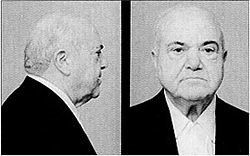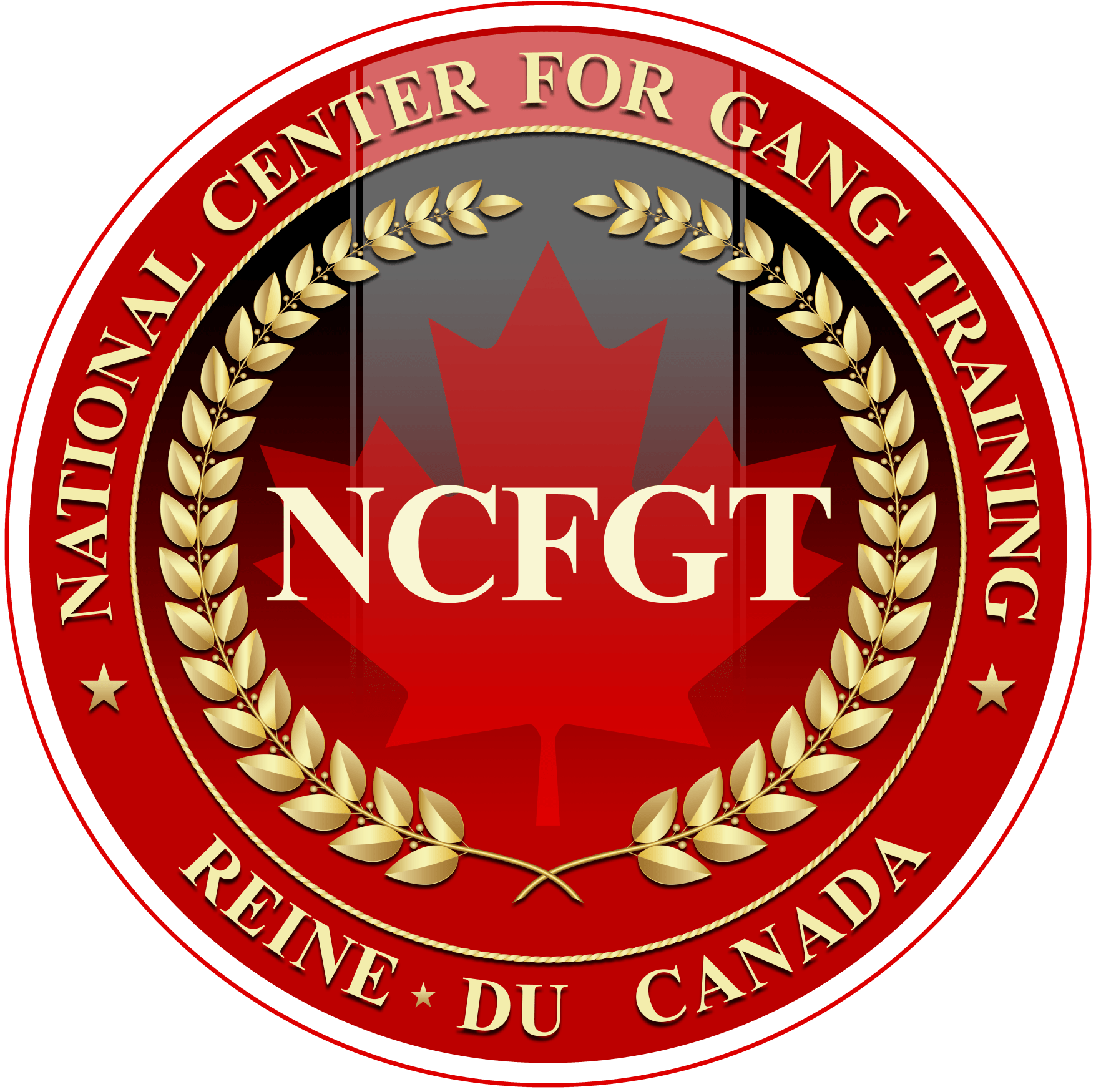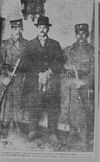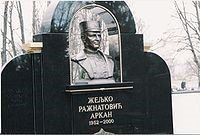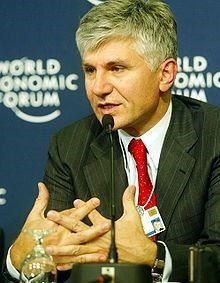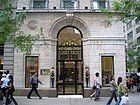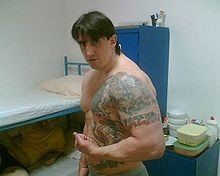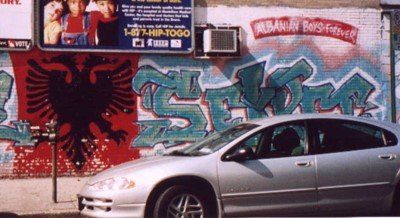Serbian mafia
Serbian Mafia
Serbian Organized Crime (Serbian: Cpпска мафија / Srpska Mafija, Serbian Mafia) or Naša Stvar ("Our Thing") are various criminal organizations based in Serbia or composed of ethnic Serbs in the Serbian Diaspora. Serbian mafiosos are very active in European Union (EU) countries. The organizations are primarily involved in smuggling, arms trafficking, drug trafficking, protection rackets, illegal gambling, jewelry and gems theft, bodyguarding, and contract killings. The Mafia is composed of several major organized groups, which in turn have wider networks throughout Europe.
The Serbian Mafia gave many Serbs a "way out" of economic disaster during the internationally imposed sanctions against Serbia during the Yugoslav Wars. Serbian criminals have been recruited to state security forces, a notable example is Legija, a commander in Arkan's Tigers which after the war was re-labeled as the JSO (Red Berets), he also planned the assassination of Serbian Prime Minister Zoran Đinđić.
History
Čaruga
In the early 1900s, a known outlaw was Jovo Stanisavljević Čaruga, a hajduk in Slavonia todays Croatia who joined the "Band of mountain birds" (Kolo gorskih tića, tići) a group of robbers who ravaged the countryside of Slavonia. The 1991 biographical film Čaruga was the last Yugoslavian film.
Ljuba Zemunac was known as a godfather of the Serbian Mafia, during the 70's and 80's he operated in Germany and Italy where he formed his gang. He was killed in 1986 by rival Goran Vuković "Majmun".
Joca Amsterdam operated in the Netherlands and became one of the strongest gangsters through his elimination of rivals while working as a hitman and took over the drug trade. He obtained the cocaine from contacts in Colombia and earned a name as the "Cocaine King". He worked for "Duja" Bećirović as an underboss. He later lived in Bulgaria where he was successful in drug smuggling until his arrest in 2002. Upon returning to Serbia, he took over companies by force, utilizing the Surčin clan, one of three then most powerful "clans" of Belgrade; Serbia. Joca was later involved in the 2008 car bombing of Croatian journalists Ivo Pukanić and Niko Franjić.
Also up-and-coming "Arkan" was successful bank robber in Western Europe during the 70's. He had convictions and warrants in Belgium, the Netherlands, Sweden, Germany, Austria, Switzerland and Italy. He managed to escape several prisons and had made connections with several known criminals from Yugoslavia during his time there. In the 80's he returned to Serbia where he started with illegal businesses and led the Red Star Belgrade supporter club Delije Sever Ultras.
The real breakthrough for criminal organizations in Serbia occurred in 1991 when wars broke out in Yugoslavia after deteriorating relations between the republics and ethnic groups. Serbs, Croats and Bosniaks fought over territory in Croatia and Bosnia and Herzegovina. International sanctions were imposed on Serbia since 1991 and the Republic was economically isolated. The economic disaster prompted the breakthrough for criminal organizations. Desperate for money, many former military and youths turned to crime.
In 1992, the gang of "Peca" was arrested; one of the members was Dušan Spasojević, the later head of Zemun clan. A young mobster from Vozdovac Aleksandar Knežević "Knele" is murdered in October, prompting brief wars in Belgrade, he was the son of Belgrade gangster "Buca Al Kapone"
Arkan was the founder and leader of the
Serb Volunteer Guard (Arkan's Tigers) a Serbian
paramilitary unit that fought during the war, made up of
Red Star Belgrade
hooligans of
Delije Sever and
gangsters from Serbia. The members profited from the battlefields and business from Serbia. He founded the
Party of Serbian Unity in
1993. When he returned from the war, he was the most powerful of the Serbian Mafia, he soon married
Turbo-Folk singer
Ceca, the most popular singer in Serbia.
Slobodan Milošević, the President, protected the Mafia in exchange for favours, thus being in direct connection with the Mafia. The business that profited the Mafia was cigarettes and oil smuggled during the start of the Yugoslav wars because of the sanctions. The businessman Stanko Subotić is one of the names that made huge profit in these times, his net worth is €650 million, of which the greater part was made after 1993 in the cigarettes trade; he was the leader of the so called "Tobacco Mafia". After the fall of Milošević, Subotić maintained connection with the Montenegrin President Milo Đukanović. Cigarettes were produced in the Republic of Macedonia and sold into Central Europe.
From 1994-2000 illegal cigarette smuggling in Italy was operated by the Serbian Mafia together with the Italian Mafia.
The 1996 Documentary film "Vidimo se u čitulji" (See you in the obituaries) follows the gangsters of New Belgrade.
The veterans of the wars turn to crimes in high rates. The most common crimes are assassinations, kidnapping, trafficking, robberies, money laundering, racketeering and illegal software production. The high profits from criminality, corrupt environment and possibility for money laundering make the organized crime vulnerable to the international community.
In 1997, 350 kilos of heroin was seized at the Serbian-Bulgarian border.
Arkan's tomb
On 15 January 2000, Arkan was murdered in the lobby of Continental Hotel Belgrade. The killer, Dobrosav Gavrić, is a 23-year-old police mobile brigade's junior member. Gavrić had ties to the underworld.
When Slobodan Milošević lost power in the October 2000 Bulldozer Revolution. However, a bloody feud soon emerged amongst the different "clans". The feud grew into an open war in which many of the mafia bosses were assassinated.
In 2000, a total 841 million € was determined to have been illegal profits in Serbia
Organized crime in Serbia had more money and better armed than the government and police, the Serbian Interior Minister Dušan Mihajlović said in 2001. He said Slobodan Milošević had given life to crime-syndicates as "state-sanctioned mafia". Prostitutes from the Soviet Republics working in Northern Europe were working for Balkan organizations. After Milošević lost power the Mafia was seeking a new contact in the government In September 2001, 700 kilos of heroin was found in a bank vault rented by the BIA in central Belgrade. The illegal safekeeping was never explained nor brought up. The Zemun gang had "special training courses" with the BIA, lending them information on Kosovo Albanian terrorists.
In 2002, a "White Book" was compiled with 52 criminal organizations of Serbia, none of which had been terminated by the year's end. The same year it was concluded that the Protection rackets in the harbor cities of the Black Sea were run by Serbian, Russian and Ukrainian OC.
In February 2003, Serbian police busted several pharmaceutical factories near Belgrade with a large quantity of amphetamine, the ringleader Milan Zarubica produced tonnes of drugs that he exported throughout Europe. He got 12 years and fourteen of his associates got sentences as well.
Prime Minister Zoran Đinđić is assassinated on March 12, 2003, by members of Special Operations Unit (former Arkan's tigers), established by Slobodan Milošević in the 90s.
During the period that started with the Yugoslav wars and ended with the assassination of Prime Minister Zoran Đinđić in March 2003, connections between the mafia and the government were obvious and corruption was rampant in most branches of the government, from border patrols to law-enforcement agencies. On March 12, 2003, Serbian Prime Minister Zoran Đinđić was assassinated by former Serbian Special Operations Unit (Red Berets, transformed from Arkan's Tigers) Zvezdan Jovanovic. Legija was involved in the assasination and he too was sentenced to 50 years in prison. Đinđić had connections within the Surčin for the earlier overthrowing of Milošević. The government set in motion a major bust on criminality in - "Operation Sablja" (English: Sabre), which led to more than 10,000 arrests. New Belgrade malls, a frequent place of gangsters, went down more than 20+% after the Operation 123 criminal groups were broken with 844 members awaiting trial; 3,949 people were issued criminal complaints, 28 kilos of heroin, 463 grams of Cocaine, 44 837 kilos of Marijuana, 4 960 synthetic drugs and 688 stolen cars were found by the day. Milan Sarajlić, the Deputy State Prosecutor of Serbia was arrested and confessed the involvement (being on payroll) with the Zemun clan. 140 kilos of marijuana is seized in Belgrade and 4 people are arrested in November, 2003. The Red Berets are dissolved on 23 March 2003.
In 2003 a White Book is published titled "Albanian terrorism and Organized Crime in Kosovo and Metohija". A total of 126 groups were registered by 2003.
In 2005 it was confirmed that Serbia loses 7.5 million RSD because of economic crime, the estimated total loss to criminal activity is at 200 million € yearly.
In 2006 It was revealed that Dušan Spasojević, the gang leader of the Zemun clan, was a connection to Serbian Radicals leader Vojislav Šešelj, whom he had given information about high-profile murders carried out in Serbia, written about in Šešelj's two books (Spasojević under pseudonym Laufer) More than 360 kilograms of heroin was seized in the first half of the year.
In January, 2009, Serbian Interior Minister Ivica Dačić estimated some 30 to 40 serious organized crime groups operating in Serbia. The figures does not include smaller size criminal groups but more organized, involved in drug trafficking and arms trafficking, human trafficking, murder and larger robberies.
In September, 2009, 22 of the Elez group is arrested by the Serbian police, dubbed the most dangerous gang in Western Balkans. The leader, Darko Elez, is captured with 5 other members in Serbia, 13 members are captured in Bosnia & Herzegovina, of which 3 were police officers.
Police seized 2.8 tons (2,800 kg, worth 120 million €) of cocaine shipment from Uruguay on October 17, 2009, the BIA and American DEA made the joint operation. On October 31, 2009, Serbian police arrested over 500 people in the biggest anti-drug bust ever in Serbia. The Interior Ministry organized the Morava-operation that would focus on drug trafficking to young people in the primary and secondary schools, clubs and cafes and would encompass 2,000 police officers searching the whole country.
In November, 2009, Argentine Police arrested 5 Serbian drug couriers and seized their 492 kilograms of cocaine in Buenos Aires, One of the largest drug busts in 2009. The routes of the drugs were from Uruguay and Argentina via Central alt. South Africa to Northern Italy alt. Turkey to Montenegro. Also, Serbian organized crime experts estimated 10,000 foot soldiers were part of 5 major organized crime groups operating in Serbia. A courier package of 5 kilos cocaine was intercepted from Paraguay, 4 Belgraders were arrested.
The busts were part of the Operation Balkan Warrior; an international drug smuggling case that involves mainly the Zemun clan, a name concluded as leader of the drug ring is Željko Vujanović.
In December, 2009, Ivica Dačić said "half of the Serbian sport clubs are led by people with links to organized crime". 21 kilos of heroin ($1,5-million) was found in a Belgrade flat rented by a Montenegrin national, the drugs were brought from Turkey.
In January, 2010, a 20-acre (81,000 m2) lot illegally owned by the Zemun clan was seized at Šilerova Street in Zemun, Belgrade, the clans headquarters. By January 21, The Balkan Warrior Operation included 19 suspects, 9 of whom are in custody, new arrests are Darko Šarić and Goran Soković who are colleagues of Željko Vujanović. Also, the same day, a 8-man crime group involved in stealing of oil over a two-year period from the NIS pipelines, the crude oil was sold through a company, worth several hundred thousands of Euros, among the arrested is a member of the MUP.
On February 10, Serbia's top officials said serious daily death threats from the narco-mafia have been directed against President Boris Tadić, Deputy Prime minister and Interior minister Ivica Dačić, Special prosecutor for organized crime Miljko Radisavljević among other top government officials.
On February 18, a group of six robbers from Belgrade were arrested, they had since 2008 stolen more than 10 million RSD from banks, post offices, gas stations, exchange offices and stores. They were all in the ages 18–23.
On February 19, Interior Minister Ivica Dačić said that more than 50 suspects were arrested today in an ongoing operation aimed against financial crime and money laundering conducted in Valjevo, Novi Sad, Belgrade, Šabac, Sremska Mitrovica, Čačak and Sombor.
In March 2010, Stanko Subotić, aka Cane, head of the so called "Tobacco Mafia" and on an international arrest warrant of Serbia, accused Nebojša Medojević, the Montenegrin party leader of Movement for Change of having organized a manhunt on him on the orders of Serbian businessman Milan Beko and Delta Holding owner Miroslav Mišković after they stole 50 million from Cane to buy Port of Belgrade and daily newspaper Večernje Novosti. Medojević had claimed that Cane and Darko Šarić had been hiding in a Montenegrin police villa in Žabljak, while Cane said in an interview that he was in Geneva, Switzerland. It is not quite clear why Zoran Đinđić the democratic leader invited his friend Stanko Subotić to invest in Serbia after the downfall of Milošević. If Stanko Subotić was really the head of the Tobacco Mafia, Zoran Đinđić would not have invited him. It seems that Subotić may not have been involved in illegal activities but was slurred by Serbian politicians and businessmen who wanted to monopolize trade and business in Serbia, and to block independent financial support for the Democratic Party.
In 11 March, a "well-known" entrepreneur was arrested with 1.2 kilograms of heroin meant for resale in Jagodina.
In 19 March, Boris Tadić vowed an all-out war on the Serbian mafia; in particular drug trafficking that is considered the biggest threat in society. Tadić has evidence that Serbian cartels have attempted to penetrate state institutions to destabilize the government. "The latest property seizures prove that those groups have laundered narco money by investing not only into their personal houses and land but also in tourism, factories and distribution of the press," Tadić said.
On 28 March 2010, 2 Bosniaks from Novi Pazar (Serbian citizens) were arrested at the Zagreb Airport with at least 1.7 kilograms of cocaine for the Serbian drug market. The pure cocaine came from Lima, Peru where they had spent the month traveling from Belgrade. The drugs were soaked in their clothes, estimated worth on the streets of Croatia was 70,000€.
In April 2010, it was concluded that Darko Šarić's gang had planned an operation against Serbian officials, including the president. Encrypted messages in local newspapers were deciphered by investigators and after long surveillance of the clan it was concluded that several hitmen were to kill Serbian officials of the MUP, BIA and state officials in a synchronized and highly well-coordinated way. The Šarić clan wants to liquidate people that are in their way, after the Balkan Warrior Operation that heavily decreased crime in Serbia and Montenegro.
On May 14, 2010, 3 Serbs who worked security for one of Bolivia's top drug lords were killed in a shootout with rival crime groups, the drug lord was kidnapped.
Interior Minister Ivica Dačić submitted the work report for 2009; the police had uncovered 7 OC groups and arrested 86 people. He said that by the end of 2009 there were 27 registered OC groups active, with each group having more than 200 members.
There is currently an ongoing investigation against Zemun clan members involved in assassinations who claim that Šešelj has ordered the assassination of Tomislav Nikolić.
In 2010 it was revealed that the Šarić gang had, in 2008 and 2009, ousted the 'Ndrangheta from the drug market. With the emergence of the gang on Italian soil, the gang offered better quality cocaine for a lower price, effectively gaining the market from 2007–2009, trafficking cocaine from South America. The Operation Balkan Warrior was successful in Italy, with over 80 people arrested. Two networks were among the arrested, one Italian, with members from Milan and other northern Italian towns, and the other, a Serbian network, with members from Serbia, Montenegro and Slovenia. The Serbian network has operatives all over Europe and South America.
Groups
Belgrade neighborhoods
- New Belgrade (Novi Beograd) gangs, organized in different Blokovi (neighborhoods), during the 90's the gangsters of New Belgrade were very successful but had after the Yugoslav wars been killed by each other.
- Surčin clan, at the beginning car thefts, smuggling of petrol and cigarettes, moved on to narcotics. Had connections with officials in police, judiciary and politicians mostly prior to the Operation Sablja.
- Zemun clan, Drug trafficking, contract-killing, abduction. Had connections with officials in police, judiciary and politicians mostly prior to the Operation Sablja. Head was Legija, a former member of French Legion, Arkan's tiger and Serbian Red Beret.
- Šarić gang
- Voždovac clan, the leader Goran Vuković "Majmun" (monkey) killed godfather Ljuba Zemunac.
- Zvezdara clan,
- Dorćol group, drug trafficking
- Karaburma One of the strongest group in Belgrade, drug trafficking
The clans have control over wide networks of smaller groups.
Other
- Arkan network († 2000)
- Elez group (-2009)
- Keka's group
- Peca's gang (-1992)
Notable people
The reign of Slobodan Milošević represented the height of power of Serbian organized crime, when mafiosos and government officials were intertwined. Milošević had criminals work for him in different special units. The role of several Belgrade gangsters were described in the documentary film "Vidimo se u čitulji" ("See You in the Obituary").
Name
Alias
Born/died
Title
Info
Affiliation
Mafiosi
Željko Ražnatović
"Arkan"
1952–2000
Head Boss
Considered the most powerful criminal in Serbia until his assassination in 15 January 2000 .
Own network
1964–1999
Boss
Killed on 27 November 1999. He was the husband of Serbian Turbo-folk singer Goca Božinovska.
Surčin
Milan Lukovic
"Kum"
-2003
Head
Head of one of the largest Serbian criminal groups on record, the Zemun clan.The peak of this cartel's influence occurred from 2000 until 2003 when Lukovic was killed by Serbian police on March 27, 2003 during a country-wide manhunt initiated after the assassination of Serbian Prime Minister Zoran Đinđić.
Zemun
Georg Stanković
"Žorž"
-1993
Boss
One of the infamous mob bosses of the older generation. He was murdered on October 1, 1993 by a sole hitman.
-1995
Boss
Leader of the Novi Beograd gang at time, he had previously survived a number of murder attempts. Divac was gunned down in the hall of the Hotel "Putnik", in Belgrade in 1995.
Novi Beograd
Jusuf Bulić
"Jusa"
-1998
Lieutenant
One of Arkan's closest lieutenants, killed in 1998.
Arkan
Dušan Spasojević
"Šiptar"
"Duća"
-2003
Head
Head of one of the largest Serbian criminal groups on record, the Zemun clan.The peak of this cartel's influence occurred from 2000 until 2003 when Spasojević was killed by Serbian police on March 27, 2003 during a country-wide manhunt initiated after the assassination of Serbian Prime Minister Zoran Đinđić.
Zemun
Ljubomir Magaš
"Ljuba Zemunac"
1948–1986
Boss
A Yugoslav amateur boxer, streetfighter and gangster, during the 70's and 80's he operated his own gang in Germany and was killed in 1986 by rival Goran Vuković "Majmun".
Own gang
Đorđe Božović
"Giška"
1955–1991
Boss
One of the closest friends of Ljubomir Magaš. He was killed in Gospic.
Sreten Jocić
"Joca Amsterdam"
"Cocaine-King"
Boss
Underboss
One of most known mafiosi, became strongest in Netherlands through his elimination of rivals. He smuggled cocaine from Colombia. He worked under "Duja" Becirovic as underboss in the Belgrade group and became boss after Duja died in 1990 after Bruinsma hired the kill. He smuggled drugs in Bulgaria and was arrested in 2002. In Serbia, he took over companies with the Surčin clan. Joca was involved in the 2008 car bomb which killed journalist Ivo Pukanić in Zagreb.
Belgrade group
Aleksandar Golubović
"Kristijan"
1969-
The only surviving gangster of top Belgrade criminals in the 90's
Milorad Ulemek
"Legija"
Boss
Arkan's Tigers member during the Yugoslav wars, transferred into the Red berets by Milošević, involved in Đinđić murder
Arkan
Zemun
Aleksandar Knežević
"Knele"
1971–1992
The youngest "star" of the Serbian mafia at the beginning of the 1990s, he was a
bodyguard to Serbian politician
Vuk Drašković. Knežević was murdered on October 28, 1992 in his room at the "Hyatt" hotel in Belgrade.
Voždovac
Giška
Goran Vuković
"Majmun"
1959–1994
Boss
Murdered Ljuba Zemunac outside the court in 1986. Was assassinated alongside mob Dušan Malović in downtown Belgrade on December 12, 1994
Voždovac
Božidar Stanković
"Batica"
-1996
Georg Stanković's son, he was murdered on June 23, 1996 by a sole hitman.
Zoran Dimitrov
"Žuća"
1966–1996
Had priorly survived a number of assassination attempts, but was killed on October 6, 1996 by a sole hitman.
Voždovac
Rade Ćaldović
"Ćenta"
-1997
The infamous
Belgrade mafioso, was murdered on February 14, 1997 in his car in
Belgrade by two assassins.
Zoran Todorović
"Kundak"
-1997
Killed on 24 October 1997.
-1998
A Belgrade gangster involved with drugs and killings. His uncle was Pavle Bulatović, the late Defense Minister. Murdered on June 30, 1998, in his cafe "Koloseum" in Dedinje by a sole hitman.
Radoslav Trlajić
"Bata Trlaja"
-2000
A Belgrade mob boss and a member of the
Novi Beograd gang. He was famous for referring to Serbia and Belgrade in the nineties as "a pond too small for so many crocodiles". He was murdered on February 26, 2000 by
Mile Luković of the
Zemun gang.
Novi Beograd
Zoran Davidović
"Ćanda"
-2000
Murdered while returning from the funeral of Branislav Lainović on March 23, 2000 by the Zemun clan.
Stanko Subotić
"Cane"
Boss
Head of the Tobacco Mafia that smuggled cigarettes throughout Europe, allegedly connected with Serbian and Montenegrin officials.
Own gang
Tobacco Mafia
Assassinations & connected people
Radovan Stojičić
"Badža"
-1997
Chief
a police chief killed on 10 April 1997 in the pizza parlour "Mama Mia" in Belgrade by a sole hitman.
Police
Zoran Uskoković
"Skole"
-2000
Businessman
a Belgrade businessman, was murdered on April 27, 2000 by the members of the Zemun clan.
Deputy Chief
(Retired)
was killed by Milorad Ulemek "Legija" and the Zemun clan in an attempt to damage Zoran Đinđić's administration by convincing the public that he was killed for delivering "evidence" of government ties with the criminals. Sretko Kalinić's, the number one hitman of the Zemun clan, DNA was found on the murder spot. Zvezdan Jovanović was asked to carry out the assassination.
Klaas Bruinsma
"De Lange"
1953-June 27, 1991
Drug lord
A Dutch drug lord killed on June 27, 1991 by Martin Hoogland, a former police hired by Joca Amsterdam as a revenge for the killing of Joca's boss, the previous Belgrade group leader Duja.
Radojica Nikčević
-1993
Businessman
Had strong ties FR Yugoslav leadership; Milošević and Arkan. He was suspected of having ties with the Medellin cartel.
Smail Tarić
-2008
Beheaded because of his connections with the police by two members of the
Berane Clan, Velibor Brkić and Milos Rašić.
Branislav Lainović
"Dugi"
-2000
Businessman
Businessman from Novi Sad. Murdered in Belgrade on March 21, 2000 by Miloš Simović of the Zemun gang.
Activity outside Serbia
The Pink Panthers international jewel thief network is responsible for some of the most audacious thefts in criminal history. They are responsible for what have been termed some of the most glamorous heists ever, with their crimes being thought of as "artistry" even by criminologists. They have targeted several countries and continents, and include Japan's most successful robbery ever amongst their thefts.
Interpol believes that the group are responsible for US$130 million in bold robberies in Dubai, Switzerland, Japan, France, Germany, Luxembourg, Spain and Monaco. They are believed to be responsible for the robbery of the jewellery store Harry Winston in Paris, on December 9, 2008. The thieves escaped with more than €80 million worth of jewellery. The total worth of jewelry that has been stolen by the Pink Panthers was 250 million € in May, 2010.
Australia
The first Serbian Mafiosi came to Australia in the late 70's, organized in a Yugoslav clan, their headquarters were some 15 kafanas in Sydney, Wollongong and Melbourne.
In the 80's the Serbian Mafia was reinforced with the arrival of Serbian immigrants.
Milivoje Matović "Miša Kobra", arrived to Sydney in 1986 and became a known gambler who organized big games. His younger brother Braca owed money to the gang of Žorž Stanković, Žorž sent his son Batica for Miša Kobra whose friend Boža Cvetić threw down the street after he had pointed a gun at them. Batica was deported to Serbia and Braca was killed in the meantime. Žorž was killed in 1993 and his son Batica in 1996.
In 2005 interviews with Australian Serbs, it was said some 20 Zemun clan members operated in Australia at the time, double the number working prior to Operation Sablja. Serbian boxer Božidar Cvetić who in 2002 was stabbed, now worked as a bouncer in Australia said that Australian police had shown him pictures of some 150 Serbian criminals active in Australia.
In May 2007, Australian police saw recruitment to organized crime motorcycle gangs from young Serbs.
Austria
The Serbian Mafia was the main operators of drug trafficking and cigarette smuggling in Austria in 2004 and Austria was the home to many Serbian gangs.[51]
On October 27, 1978 Veljko Krivokapić secretly met with Ljubomir Magaš, a member of the gang he had just left, at the Zur Hauptpost coffee house in Vienna. Magaš and another Yugoslav, Rade Caldović, grabbed Krivokapić and fractured his skull with a glass bottle.
Involvement with Corsican gangsters in late 1960s.
- Stevan Markovic's body was found in garbage bags in 1968. He was the former bodyguard of Alain Delon. His godfather, Corsican gangster Francois Marcantoni, was under investigation for murder and spent 11 months in custody.
The Pink Panthers have operated in Austria.[52]
Belgium
In 1990, Kosovo Albanian Human Rights Activist Enver Hadri is assassinated in Brussels by Veselin Vukotić, Andrija Lakonić, and Darko Ašanin, at the time hired by the UDBA (Yugoslav intelligence).
Bosnia
The Serbian Mafia is the largest organized crime group in Bosnia & Herzegovina with operations from the entity of Republic of Srpska.
The Zemun clan is active in Bosnia.
Bulgaria
From 1994-1997 Zemun clan leader Dusan Spasojevic used heroin supplies channels through Sofia.
In 1997, 350 kilos of heroin was seized at the Serbian-Bulgarian border.
Sreten Jocić (Joca Amsterdam) escaped custody in Netherlands in 1993; he left for Bulgaria where he would continue his drug smuggling under the pseudonym "Marko Milosavljevic". He was arrested in 2002 and extradited to Netherlands.
One Macedonian national and 2 Bulgarians were arrested during the Operation Moonlight linked with the Zemun clan; they trafficked cocaine from Bolivia.
Zemun clan member Nenad Milenković "Milenko" was arrested in 2003 at the Varna resort, following the international warrant by the Serbian police after Operation Sablja. He was suspected of orchestrating at least 3 murders in Bulgaria and some 20 in Serbia.
The Zemun clan successfully managed the drug traffic from Bulgaria after 2003, taking over the market from Surcin-associate Sreten Jocić.
Bulgarian tycoon Iliya Pavlov was murdered by Serbian Mafia in 2004 it is believed. He owed 250 million dollars to the Milosevic regime.
Croatian hitman Robert Matanic and his colleagues were hired by the Zemun clan to kill people of the concurrenting Bulgarian Mafia for the Balkan drug route. Dimitar Hristov, Kaloyan Savov and Zhivko Mitev were killed in a shootout on June 4, 2004. Matanic and his men were hired by Milcho Bonev (SIC) as bodyguards after friends of Matanic introduced by his Serbian friends in the Zemun clan. Milcho Bonev was assassinated in 2004, believed to be organized by the Serbian Mafia.
In September 2007, a believed internal feud resulted in the death of Jovica Lukic, the critical wounding of 2 other men, a mother and her baby. The men were all members of the Zemun clan.
Former Litex president Angel Bonchev had business with the Zemun clan. He was kidnapped in 2008.
The Zemun clan is active in Bulgaria.
Croatia
The murder of Croatian publisher and founder of weekly "Nacional" Ivo Pukanić and his marketing chief Niko Franjić in 2008 was ordered by Sreten Jocić who hired Željko Milovanović, a former Red Berets member who bombed the car of the publisher with the help of Milenko Kuzmanović. Pukanic had ties to Balkan criminals. All three were arrested by the Serbian police.
Czech Republic
In the 90's, Serbian organized groups were one of the leading syndicates operating in Czech republic. A letter was sent to Czech newspapers containing information on a supposed future assassination of President Havel by 5 members (Vaso, Krule, Draza, and Micko) and their whereabouts, the letter was written in broken Czech, thought by the Police to be sent by a rival gang.
Denmark
The Serbian-Danish actor Slavko Labović, who played Radovan in the movie Pusher, was arrested, along with his brother, for possession of illegal arms (loaded gun) in Sweden. He was the director of the RK Company in Denmark, an illegal gambling company owned by Rade Kotur (Spelkungen, The Gambling King) a known figure in Sweden who hired the murder of Ratko Đokić. During the trial of Rade Kotur, Labović came to support Kotur.
Finland
Human trafficking and Illegal immigration was growing in Finland orchestrated by Serbian Organized crime groups in 2004 (alongside Chinese triads).
France
Known in French as Mafia Serbe.
In 1962, Stevica Marković, Miša Milošević and Radovan Delić arrived in Paris, were part of the "Garderodameri" that was formed in 1966 with the arrival of Marko Nicovic.
Harry Winston
The Pink Panthers have operated in France. In October 2008, police officials in Monaco arrested two members of the gang, a Serb and a Bosnian Serb. The gang is suspected of jewelry and gems theft at Harry Winston for an estimated value of up to 80 million Euros or 105 million US dollars.
Greece
Kristijan Golubović operated in Greece
After the Yugoslav wars, Kristijan Golubović worked in Greece. In 2002 he escaped from Malandrino, a Greek prison where he was serving a 14 and a half years sentence for stealing two Mercedes-Benz cars and an armed robbery.
In December 2009, two Serbs were arrested suspected of involvement of a major group smuggling cocaine from Peru to Montenegro on luxury yachts. The American DEA helped the Greek police to track the smuggling for 5 months. 2 other Serbs are wanted in Serbia.
Germany
Known in German as the German: Serbische Mafia, Jugoslawische Mafia.
The Serbian Mafia was the main operator of cigarette smuggling in Germany in 2004.
- Ljubomir Magaš "Ljuba Zemunac" ("Ljuba from Zemun"), "The Godfather", is considered as the ultimate boss of the Serbian mafia at the time. He was killed by two shots to the heart from close range in front of the courthouse in Frankfurt, Germany in 1986 by Goran Vuković "Majmun".
- Goran Vuković "Majmun" ("Monkey"), who is most famous for killing Ljubomir Magaš, survived five murder attempts following the killing of Ljubomir Magaš before he was assassinated in downtown Belgrade in broad daylight in 1994. He was a member of the Vozdovac clan.
Slobodan Grbović "Slobo" left Italy for Germany in the 70's and became friends with Vaso Letećeg, a thief from Belgrade. In 1981 this friendship ended when they feuded over money, Slobo shot his patron Vaso and went to prison, Vaso survived.
In 1980, Branislav Saranovic, escapes the Wuppertal prison with the help of the Ljuba Zemunac gang who blew up a prison wall.
In February, 1988, Rade Caldovic is appointed the leader in Germany after good relations with the Italian Mafia in Milano. He becomes friend with Greek businessman Mihail Sainidis who owns over 15 casinos in southern Germany. On 30 March, Zoran Lucic, a Belgrade gangster kills an Albanian rival in Frankfurt.
In the 90's, the underground of former Eastern Germany was controlled by Italian, German, Russian, Vietnamese and Serbian organized groups. Leipzig was the centre of money laundering, smuggling, prostitution and protection rackets due to the weak system. The most profitable operations of the groups from former Yugoslavia was car thefts, luxury cars were stolen in Germany and sold to Eastern Europe, North Africa and Far East.
Andrija Drašković, an heir to Arkan's syndicate following his assassination, was arrested by German police in Frankfurt after four years on the run from the Italian Anti-Organized Crime Unit. Drašković is believed to have organized the murder of his former boss Arkan.
The Pink Panthers have made jewelry robberies in Germany
Hungary
The main organized crime groups in Hungary in 2004 were the Bulgarian and Serbian Mafia.
Italy
Dado Cerović "Metko" was the most powerful of Yugoslav criminals in Milano before moving to Genova. Bole Grčić "Bembe" and Miša Begonja "Glava Ciganin" were left of his entourage in Milano.
In 1971 Ljubomir Magas arrived in Milano with "Dača" and he settled in Milan. His friend Rade Caldovic "Centa" was shot in his stomach in Verona by rival Bata Glavac, Caldovic later went to prison in Rome. The Yugoslav mafia in Milano was formed by Ljubomir Magas, Rade Caldovic, Veljko Krivokapic, Slobodan Grbović "Slobo Crnogorac", Milan Civija, Dule Milanovic, Dragan Malesevic, Mile Ojdanic, Sava Somborac, Pera Oziljak, Marinko Magda, Arkan, Djordje Bozovic "Giška". They did holdups, murders and burglaries in Trieste, Rome and Milano.
Dragomir Petrović "Zmaj" (called Drago lo Slovo, Drago the Slav in Italian) was a Serbian gangster who found his way to Milano, he was connected with a godfather of the Italian Mafia in Calabria. He was involved with gambling, bank and jewelry robberies,
Later an influx of gangsters from SR Montenegro strengthened the Yugoslav position in the Italian underworld. Vlasto Petrović "Crnogorac", Djordje Božović and Darko Ašanin were connected with mafiosi operating from Montenegro; Branko and Slobo Šaranović, Brano Mićunović and Ratko Djokić, Sarajevo; Miša Martinović, Zagreb; Marko Vlahović. In the same time Slobodan Grbović "Slobo Crnogorac" left for Germany and teamed up with Vaso Letećeg, a thief from Belgrade.
During the 90's the 'Ndrangheta acquired weapon arsenal (Bazookas, explosives, automatic firearms) built in Serbia, imported through firms outside Italy.
From 1994-2000 illegal cigarette smuggling in Italy was operated by the Serbian Mafia together with the Italian Mafia.
Zemun clan member Ninoslav Konstantinovic fled Netherlands to Italy after his brother was arrested in 2003. In Italy he became a leading heroin distributor and professional hitman, working for the Italian Mafia in Naples, he is recognized as highly skilled as many of his fellow Zemun clan members are known throughout Europe. His assassinations are known to be brutal and ruthless executions.
In May 2009, Vladimir Jovanović, a former Zemun clan member and Interpol wanted was arrested in Italy.
The presence of Serbian OC groups, among others, have increased rapidly the later years because of the badly controlled coastline.
Luxemburg
International burglary networks were present in 2004, mainly from Southeastern Europe (the Balkans).
Macedonia
- Branko Crvenkovski - self-proclaimed leader of the macedonian opposition. Godfather of illegal tobacco, oil and narcotic trading.
- Dragan Daravelski: Ran illegal operations in Belgrade and a counterfeiting ring in Kumanovo.
- Zoran Boyadjiski, involved in drug trafficking in Germany, Bulgaria under the Zemun clan.
A Macedonian national was kidnapped for a 700.000 € ransom in 2004.
Stanislava Cocorovska Poletan, married to Ranko Poletan, a former commander of the Serbian Volunteer Guard (Arkan's tigers), was suspected of having orchestrated the transport of 486 kilos of cocaine seized at the border crossing of Blace, heading for Greece with the final destination in Western Europe. Poletan is linked with Serbian criminal organizations operating during the Milosevic regime with cigarette and alcohol smuggling, she is also said to be close to chief of Macedonian secret police Slobodan Bogoevski. Cocorovska, who is also a holder of a Serbian citizenship, was extradited to Macedonia in May 2007 and sentenced to 14.5 years of imprisonment.
Montenegro
Montenegro was in a state union with Serbia (Serbia & Montenegro, former FR Yugoslavia) from 1991-2006.
The Serbian Mafia is the leading criminal group in Montenegro. Many of the Belgrade crime groups that were not caught during Operation Sablja hid in Montenegro.
The Zemun clan is active in Montenegro.
Netherlands
There has been a number of unsolved murder cases in Amsterdam that have been linked to the activities of Serbian Organized Crime gangs. In recent years the Serbian mafia has been growing strong in the Netherlands. In 2004, the Ecstacy and Heroin of Netherlands originated from the Balkan region, Serbian organized crime groups dominated the auto theft-smuggling.
- Sreten Jocić ("Joca Amsterdam"), is a hitman and a drug dealer. He is considered to be the leader for the Serbian mafia in Amsterdam.
On Christmas Eve, 1974, Slobodan Mitric killed 3 alleged UDBA members in Kafana "Mostar" in Amsterdam.
In 1977, Emilio Di Giovine was wounded and 2 of his men killed by rival Yugoslavs.
On 24 October 1979, Arkan, Slobodan Kostovski and an Italian are arrested while robbing a jewelry store in Amsterdam, they had days earlier robbed a jeweller in Hague and were sought in several countries. On 8 May 1981, Arkan escaped from the Bijlmerbajes prison in Amsterdam with Italian Sergio Settimo, one of the most sought criminals in Europe.
In 1992, a member of the Chinese Triad is killed after a debt to the Serbian Mafia.
The Serbian OC groups have become stronger and has superseded the Russian Mafia in Netherlands and the arms trade is shared by Serbian and Turkish groups.
Norway
Non-Norwegian gangs and Organized Crime groups came to dominate Norway's drug trade in the 1980s. During the 1990s Norway saw a large influx of Yugoslavs seeking refugee status due to the conflict in the Balkan region.
Slovenia
A growing trend of human trafficking by Balkan organized crime groups in 2004, Serbian organized crime operated the cigarette smuggling and arms trafficking. Serbian Mafia is the strongest organized group in Slovenia.
Spain
A growing trend of auto theft was seen by Southeastern European organized crime groups in 2004, Serbian organized crime groups saw a growth in Spain.
Sweden
Known in Swedish as: Serbiska maffian, Jugoslaviska maffian, Juggemaffian.
The Serbian mafia in Sweden was said to be the top criminal organization, but its influence has declined since the deaths of several leading figures.
A war was fought over the control of the trade of narcotics and cigarettes between Serbian Organized Crime leaders which resulted in Joksa's and Ratko Đokić's deaths.
Individuals associated to Serbian Organized Crime in Sweden:
- Ratko Đokić "The Godfather", arms dealer and cigarette smuggler, he was murdered May 5, 2003 by Serbian hitmen hired by Rade Kotur, another notorious Serbian criminal.
- Dragan "Jokso" Joksović, notorious gambler and assumed cigarette smuggler, was murdered February 4, 1998 in Solvalla, Stockholm by a Finnish hitman hired by "Kova". He was a close friend of Arkan and is said to have helped Arkan on many occasions. Arkan and many other known mafia figures attended his funeral. As revenge, "Kova" was later killed in front of 60 guests at the order of Arkan.
- Milan Ševo, declared to be the last Head of the Serbian mafia in Sweden. He has survived many murder attempts and in 2004 he escaped from prison. He is married to Ratko Đokić's daughter. It is believed that he has connections with Swedish Hells Angels MC. He is currently living in Serbia where he is a successful businessman.
Sweden saw a large influx of ethnic Serbs during the 60s and 70s, when the "Arbetskraftsinvandring" took place; The labour force of immigrants who were granted citizenship (similar to Gastarbeiter programme). In the 80's the Serbs were the main operators of drug smuggling in Sweden.
During the 90s a war on the cigarette trade was fought between factions of the Serbian Mafia in Sweden, it resulted in many deaths of top figures.
On March 15, 2003, a Colombian hitman hired by a rivaling gang failed an attempted assassination of Ševo and his companions at a K-15 fighting gala.
In 2003, in a storage room located in the Vårby Gård suburbs, the Swedish police found silenced firearms; Ak47's Uzi's and MP5's, bombs; grenades, plastic explosives and mines. The arsenal was used by the Serbian Mafia in Sweden, the owner of the storage was Milan Ševo, the son-in-law of Ratko Đokić, the former head of Mafia; the title soon inherited by Ševo.
On May 5, 2003, Ratko Đokić was assassinated outside his Boxing club in Skärholmen. One of the hitmen, Nenad Mišović, was arrested in Europe years later. Mišović came to Sweden in 2002 after fleeing the police in Serbia. He was hired by Rade Kotur, a rival of Đokić
In 2004, the Serbian Mafia dominated the organized crime in Sweden, known uncovered operations were doping substances.
One of the chapters in the "Svensk Maffia" (Swedish Mafia)-book follows the history of the Serbian mafia in Sweden from the 60's to modern time.
Serbian Interior Minister Ivica Dačić claims that former members of the paramilitary Red Berets took part in the 2009 Västberga helicopter robbery one of the most spectacular heists in the history. One month prior to the robbery, the Swedish Embassy was allegedly given "certain information about a criminal group which was preparing a robbery" by Serbian police.
Switzerland
Arkan is arrested in Bern, 1982, but escapes the police station.
United Kingdom
On June 2, 2009, six Serbs were convicted together with several Israelis for their role in a major smuggling of 12.5 ton (£36m) marijuana, orchestrated by the Israeli mafia. The marijuana was seized as it travelled from Larache, Morocco to Southampton on a tugboat under an Israeli flag.
The Pink Panthers have operated in London.
United States
There has been known involvement of Balkan crime groups in the United States.
One of the most notorious Serbs was Boško Radonjić, leader of the Irish-American organized crime group "the Westies", from 1988-1992. He reestablished the relations with the Gambino family under John Gotti.
In popular culture
The Balkan Mafia has appeared in a number of films and video games. They have appeared in:
- Beck – Kartellen, Swedish crime thriller, about the case of a murdered restaurant owner
- In China They Eat Dogs, Danish action-comedy, about a debt to Serb gangsters
- Layer Cake, British action,
- Leo, Swedish drama, about the revenge of his wife's murder
- Pusher trilogy, Danish action,
- Paradiset, Swedish drama thriller,
- Snabba Cash, Swedish action, about criminal activities in Stockholm, one of the protagonists is a Serb henchman
- Rane (1998), Serbian Crime/Drama/Comedy
- Vidimo se u citulji, Serbian documentary about several Belgrade mafiosi
- "Straight Business 2", Canadian International Short Film
- "Straight Business 3", Canadian International Short Film
- The First Rule, by Robert Crais
- Bröderna Jaukka (2010), Swedish short film
Captifs (international title Caged) is a 2010 French horror film directed and co-written by Yann Gozlan. The film is about a woman named Carole who is traumatized after seeing her friend Laura being killed by a dog twenty years ago. Carole works as an aid worker in former Yugoslavia and begins to leave for Kosovo with two co-workers when she is kidnapped by a gang of masked men who deal with human organ trafficking.
